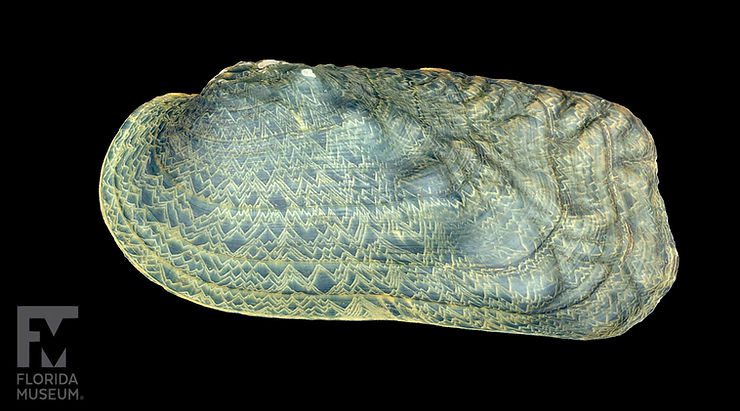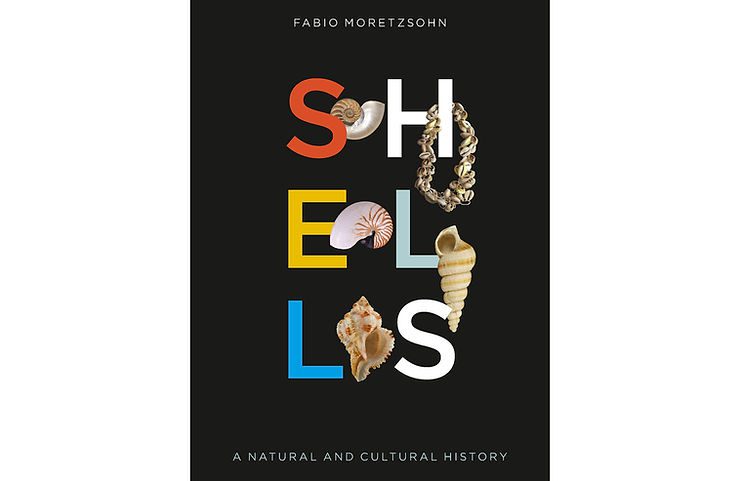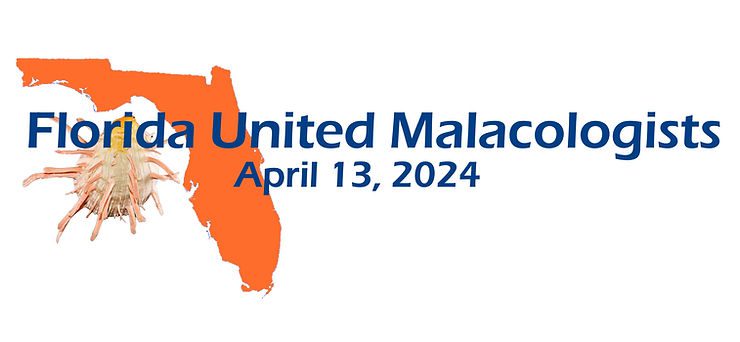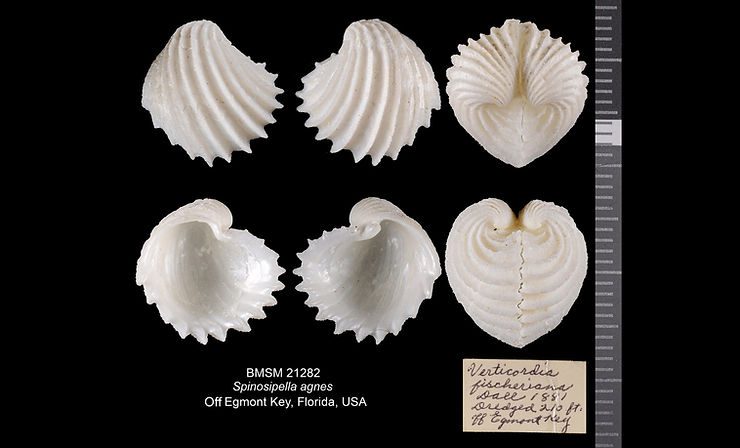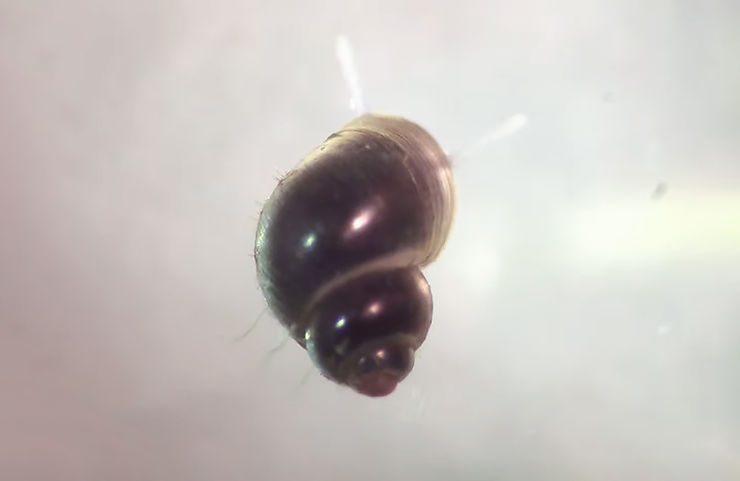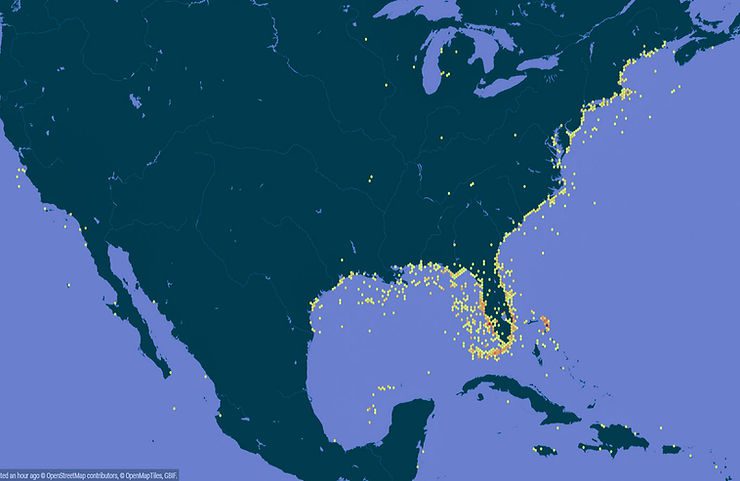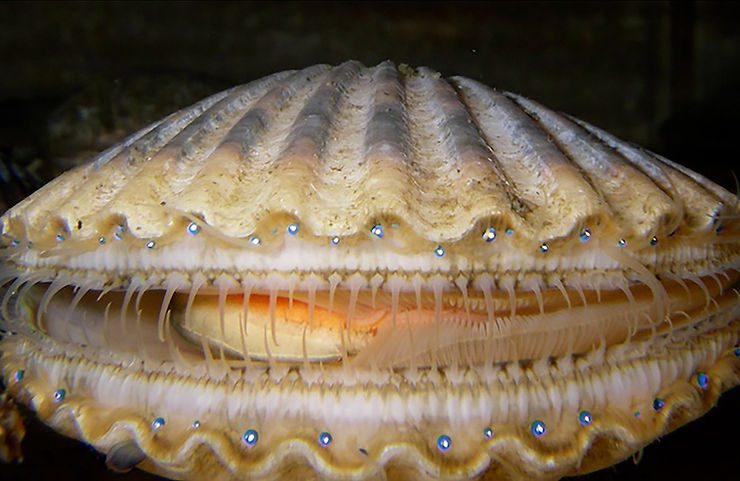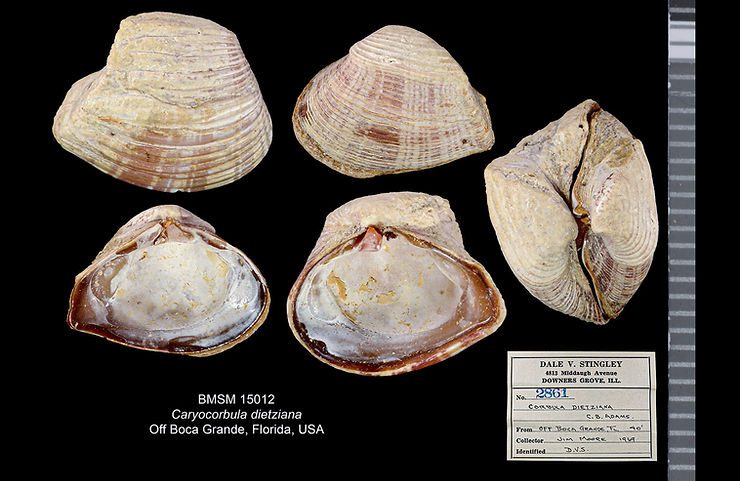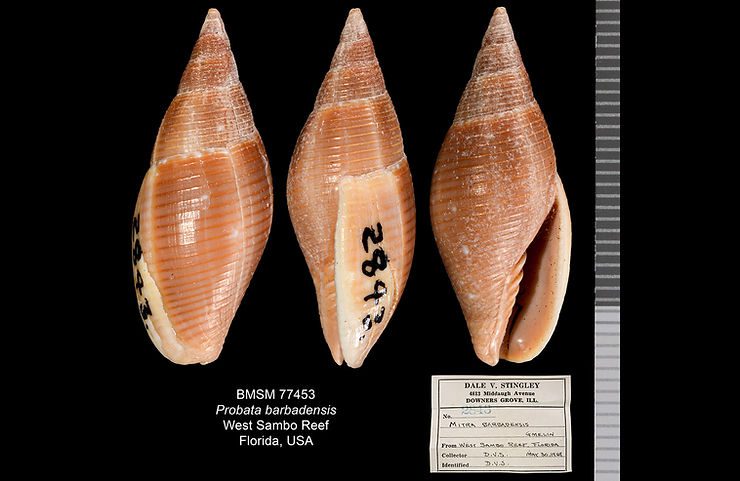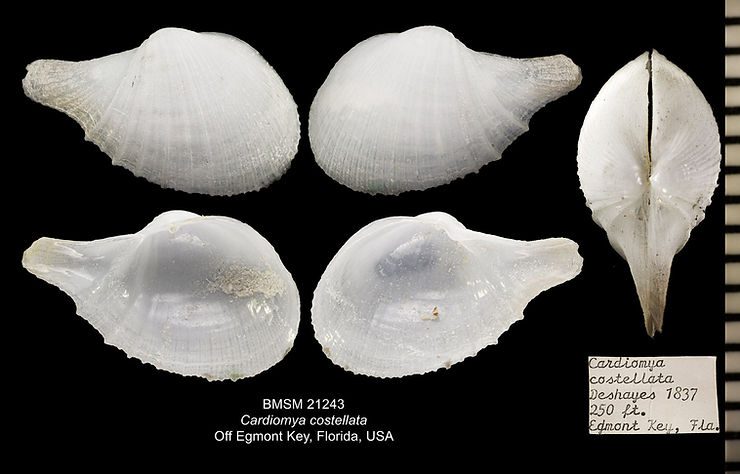
Shell of the Week: The Little-ribbed Cardiomya
The bivalve Cardiomya costellata reaches only 11 mm (0.44 inch) and, as most members of the family Cuspidariidae do, has a shell sculpture of prominent radial (from the beak to the margin) ribs and a tube-like projection on the posterior end of the shell called a rostrum. The internal surface of the valves is glossy. Cuspidariid clams are carnivores and live buried, sticking their siphons through the rostrum out of the soft-sand or mud to detect and ingest prey (small worms, crustaceans, etc.) T
